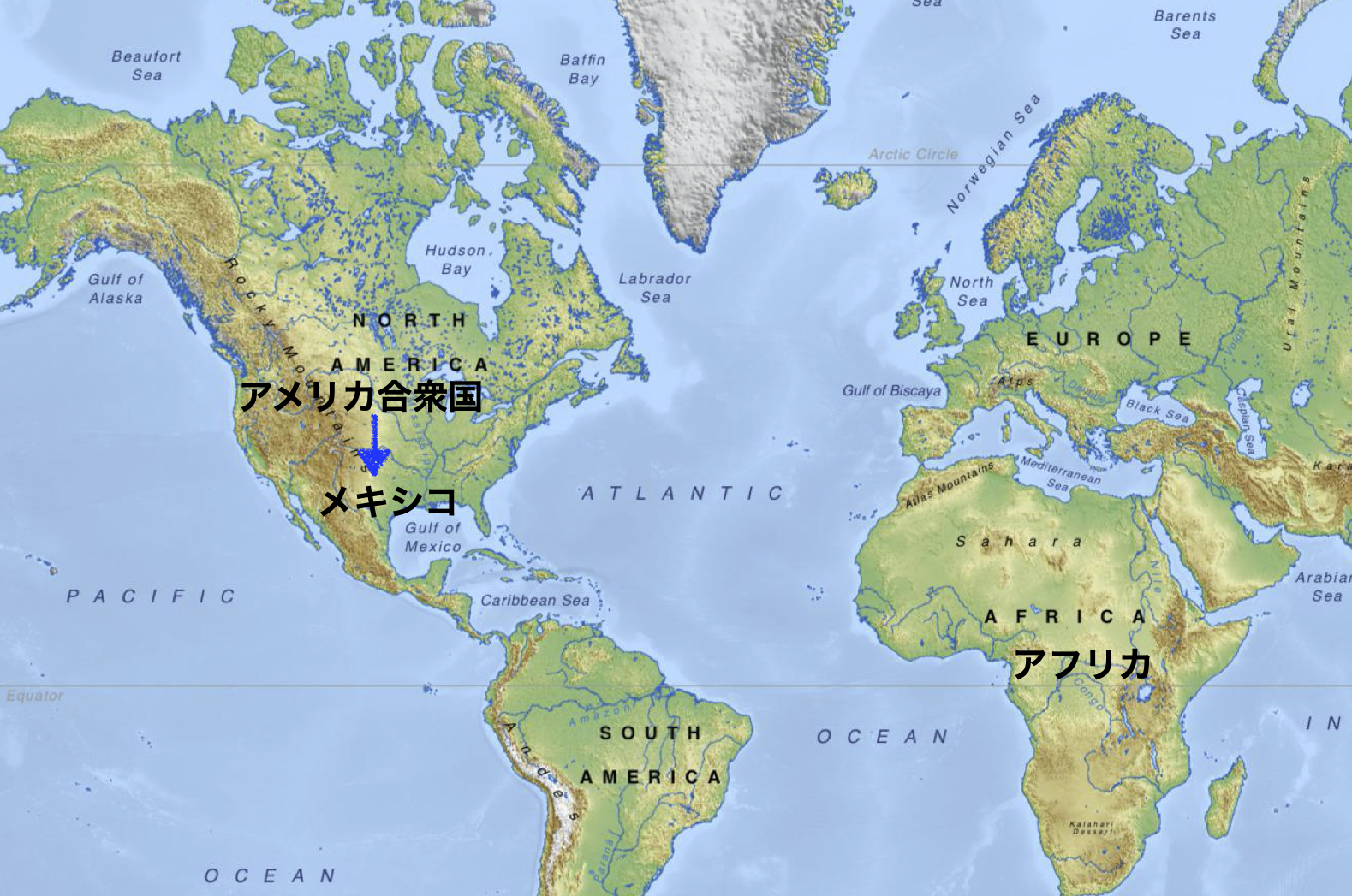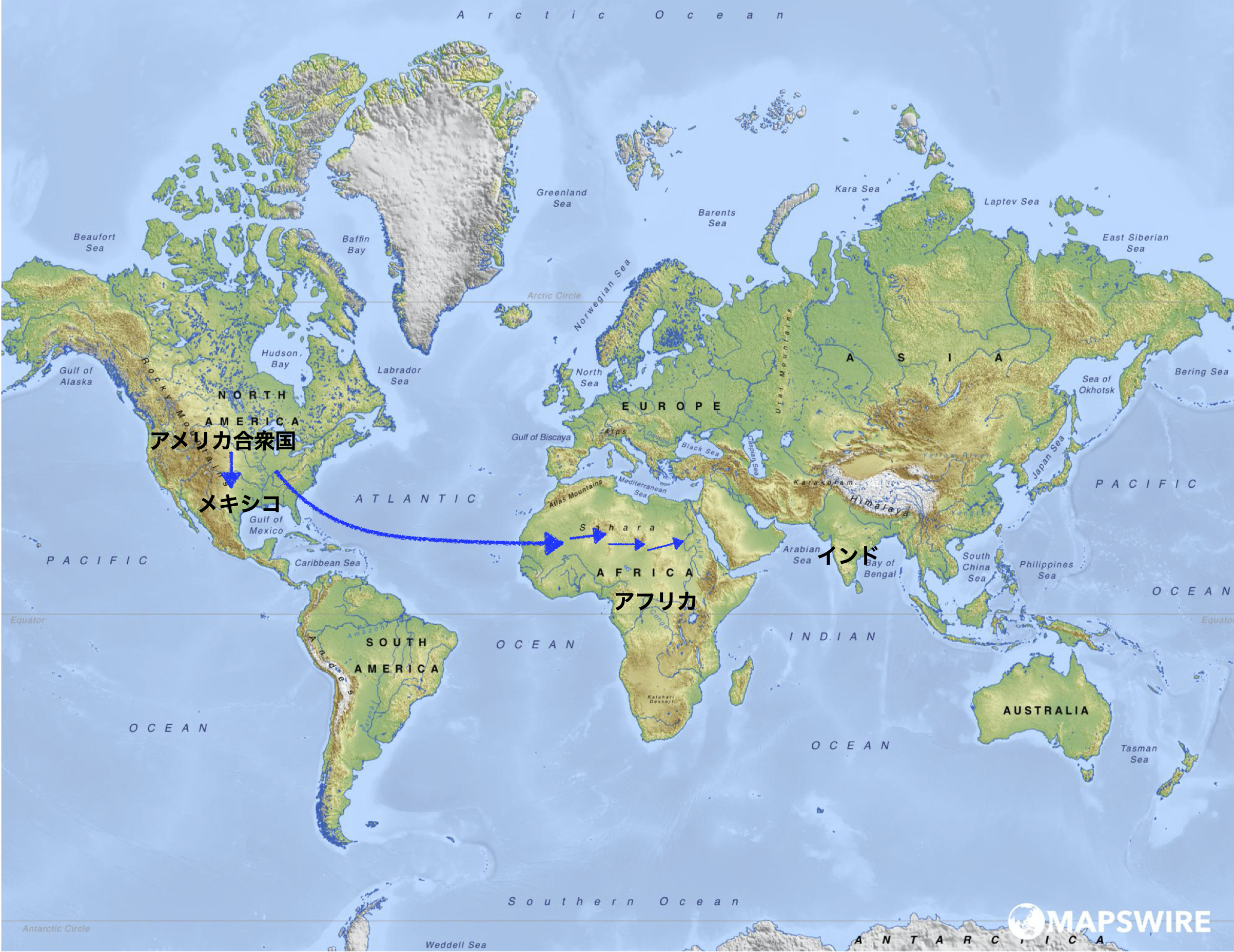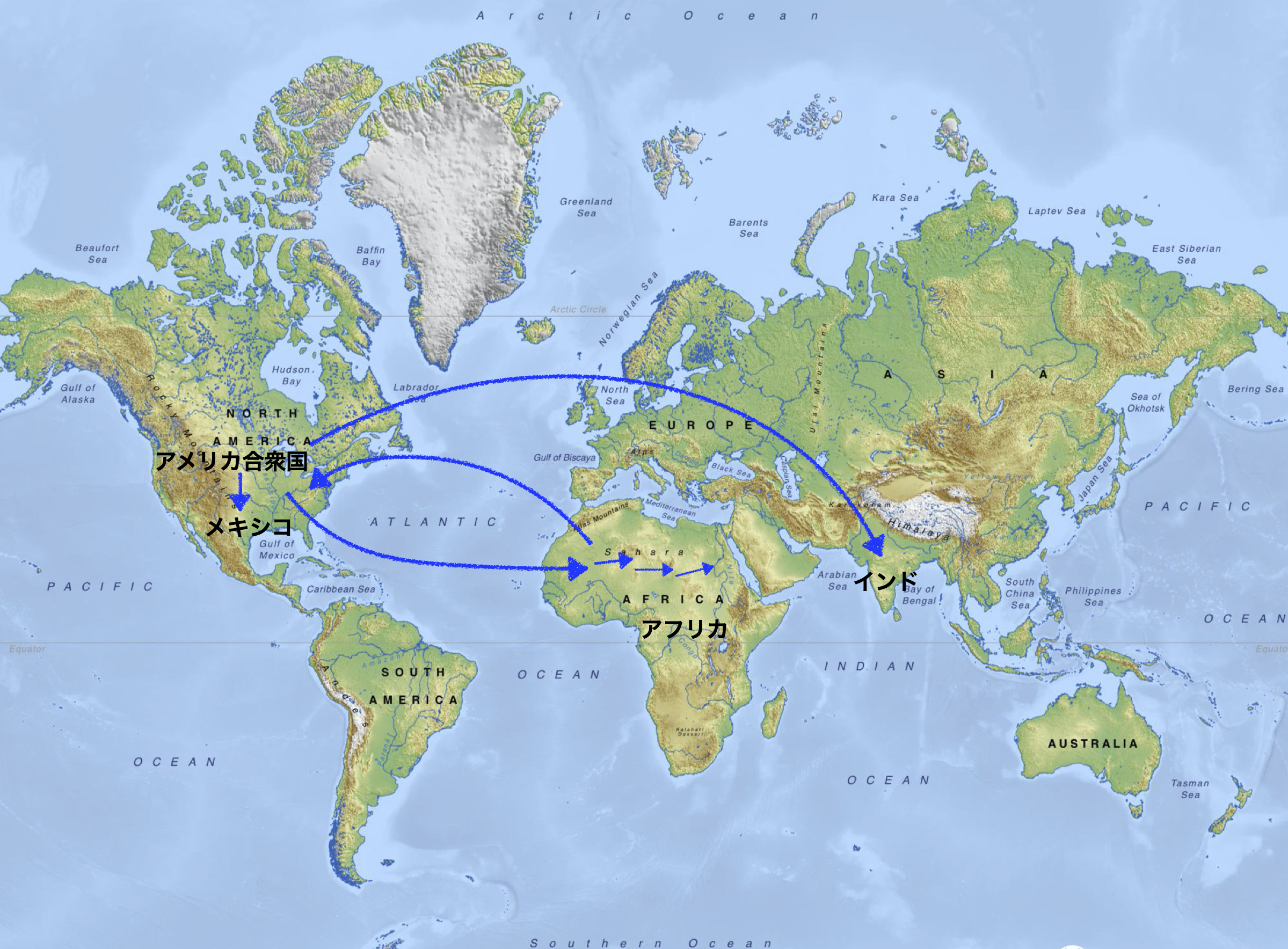2.ダフ先⽣の授業―「グローバル・ヒストリーとしての⾷物史」(2020 春学期:2〜
5⽉)
Introducing Professor Duffʼs Course―"Global Histories of Food" (2020 Spring Semester: February - May)


 さて、2020 年2⽉に時計の針を戻してみましょう。その頃、コルビー⼤学は春学期が始まったばかり。いつも通りスムーズに、⼤学⽣活が送られていくかのように⾒えました。私はこの学期、「グローバル・ヒストリーとしての⾷物史」という授業を教えることになっていて、とても楽しみにしていました。その授業では、学⽣と共に世界各地を「訪れ」つつ、⾷に関する興味深い要素を歴史から学んでいく予定でした。
さて、2020 年2⽉に時計の針を戻してみましょう。その頃、コルビー⼤学は春学期が始まったばかり。いつも通りスムーズに、⼤学⽣活が送られていくかのように⾒えました。私はこの学期、「グローバル・ヒストリーとしての⾷物史」という授業を教えることになっていて、とても楽しみにしていました。その授業では、学⽣と共に世界各地を「訪れ」つつ、⾷に関する興味深い要素を歴史から学んでいく予定でした。
Now, letʼs go back to February 2020. The spring semester just started, and it seemed to go smoothly as usual. I was very excited to teach my course titled "Global Histories of Food." In this course, I planned to "visit" different parts of the world with my students and explore many interesting elements related to food.
***
 ⾷べ物や⾷⽂化は、様々なアイデンティティの形成に重要な役割を果たしてきました。さあ、16 世紀から現在にかけての「⾷」の歴史を⼀緒に探っていきましょう!
⾷べ物や⾷⽂化は、様々なアイデンティティの形成に重要な役割を果たしてきました。さあ、16 世紀から現在にかけての「⾷」の歴史を⼀緒に探っていきましょう!
We will trace how food has been vital to the constitution of various kinds of identities since about the sixteenth century!
![]() 楽しみだな〜。よし、じゃあどの地域から始めようか?
楽しみだな〜。よし、じゃあどの地域から始めようか?
How exciting! Which area should we start with?
![]() メキシコから始めようよ。スペインによるメキシコの植⺠地化が始まる1521年から考えていくのはどう?
メキシコから始めようよ。スペインによるメキシコの植⺠地化が始まる1521年から考えていくのはどう?
Letʼs begin in Mexico. How about starting shortly after its conquest by Spain in 1521?

Base Map Source: © https://mapswire.com/world/physical-maps/
![]() 賛成!
賛成!
That sounds good!
![]() メキシコの「⾷」を考える際に重要なのは、植⺠地化された側と植⺠地化した側の違いの形成だと思う。それに、⾷べ物や⾷⽂化がどう利⽤されたかを考えようよ。
メキシコの「⾷」を考える際に重要なのは、植⺠地化された側と植⺠地化した側の違いの形成だと思う。それに、⾷べ物や⾷⽂化がどう利⽤されたかを考えようよ。
It is important to consider how food was used to establish differences between colonized others, and colonizing selves.
***
 確かにとても⼤事な点ですね。アメリカの教育現場では、「植⺠地化」の歴史に対し、「された側」と「した側」の過去を検討することが⼤切だとされています。植⺠地時代に⽣じ、そして現在にまでひきつがれている問題から⽬をそむけるのではなく、共に向き合う機会が多く取り⼊れられています。それは、将来の世代を育てることに重要だと考えられているからでしょう。この点について、今回はダフ教授に具体的な内容を聞くことができませんでしたが、いつか詳しく伺える機会があることを願っています。
確かにとても⼤事な点ですね。アメリカの教育現場では、「植⺠地化」の歴史に対し、「された側」と「した側」の過去を検討することが⼤切だとされています。植⺠地時代に⽣じ、そして現在にまでひきつがれている問題から⽬をそむけるのではなく、共に向き合う機会が多く取り⼊れられています。それは、将来の世代を育てることに重要だと考えられているからでしょう。この点について、今回はダフ教授に具体的な内容を聞くことができませんでしたが、いつか詳しく伺える機会があることを願っています。
This is a significant point. In American classrooms, colonial history is considered as an important topic to cover; teaching it is critical to nurture future generations. Students have opportunities to discuss the colonial past as well as various problems driving from it, and they are encouraged to pay attention to both the colonizers and the colonized to understand different perspectives. This time I did not have enough time to let Professor Duff illustrate how she taught food and colonial history in more detail, but I hope that we will have a chance to learn about it in the future!
 ええ、また機会があればぜひ。
ええ、また機会があればぜひ。
Yes, Iʼd love to explain more if there is a chance.

Base Map Source: © https://mapswire.com/world/physical-maps/
 メキシコの次はアフリカを⽬指し、⻄から東へと進んでいきました。その際には、⾷べ物に関する技術、特に稲作が奴隷制下のアフリカ⼈の経験に与えた影響に注⽬しました。例えば、エチオピアの歴史を訪れた時は、「饗宴」がエチオピア国家の形成やその意味にどう影響したのか、また国家意識に対する新しい視点をどう⽣み出していったのかについて検討しました。
メキシコの次はアフリカを⽬指し、⻄から東へと進んでいきました。その際には、⾷べ物に関する技術、特に稲作が奴隷制下のアフリカ⼈の経験に与えた影響に注⽬しました。例えば、エチオピアの歴史を訪れた時は、「饗宴」がエチオピア国家の形成やその意味にどう影響したのか、また国家意識に対する新しい視点をどう⽣み出していったのかについて検討しました。
The course then moves to west and east Africa, and focuses on how knowledge of food technology—rice production, in particular—shaped enslaved Africansʼ experiences of the Americas. In Ethiopia, we looked at the making of new ideas of Ethiopian nationhood through feasting.
***
 では、もう⼀度アメリカ合衆国に戻りましょう。そして、アフリカ系アメリカ⼈のアイデンティティが社会的・法的影響を受けつつ、いかに「⾷」と複雑に絡み合いながら形成されていったのかを考えましょう。
では、もう⼀度アメリカ合衆国に戻りましょう。そして、アフリカ系アメリカ⼈のアイデンティティが社会的・法的影響を受けつつ、いかに「⾷」と複雑に絡み合いながら形成されていったのかを考えましょう。
Now, letʼs return to the United States again. Here, we will pay attention to how food figured in the difficult constitution of African-American identities.
![]() ダフ先⽣、⼤切な視点ですね!さて、アフリカ系アメリカ⼈のアイデンティティについて話し合った後は、どこに⾏きましょうか。
ダフ先⽣、⼤切な視点ですね!さて、アフリカ系アメリカ⼈のアイデンティティについて話し合った後は、どこに⾏きましょうか。
Prof. Duff, thatʼs an important perspective! Well, after the discussion of African-American identities, where should we go?
![]() また東を⽬指そうよ。三番⽬の⽬的地はインドにしよう!
また東を⽬指そうよ。三番⽬の⽬的地はインドにしよう!
How about shifting our direction eastwards again? Letʼs go to India!

Base Map Source: © https://mapswire.com/world/physical-maps/
![]() よし、インドに着いたぞ。今度は、17世紀から20世紀に渡る植⺠地化の⼀連のプロセスにどのように「⾷」が関係していたのかを話し合おう。
よし、インドに着いたぞ。今度は、17世紀から20世紀に渡る植⺠地化の⼀連のプロセスにどのように「⾷」が関係していたのかを話し合おう。
Okay, we are in India now. Letʼs discuss how food mediated a series of colonial encounters there from the seventeenth to the twentieth centuries.
***
 授業はこのような感じでどんどん進められていました。そして、世界各地の多様な「⾷」の歴史を訪れ、学び、議論し、⾃分なりに考えた後、またアメリカ合衆国に戻って来て、「⾷」と移⺠のアイデンティティ形成の関係について話し合ったり、20世紀の政治運動について検討したりする予定でした。しかし。。。
授業はこのような感じでどんどん進められていました。そして、世界各地の多様な「⾷」の歴史を訪れ、学び、議論し、⾃分なりに考えた後、またアメリカ合衆国に戻って来て、「⾷」と移⺠のアイデンティティ形成の関係について話し合ったり、20世紀の政治運動について検討したりする予定でした。しかし。。。
The course was moving forward like this. After travelling around the world to learn various histories of food, we were planning to return to the United States, and conclude the course through paying attention to foodʼs place in the making of immigrant identities as well as twentieth-century social and political movements. But…





